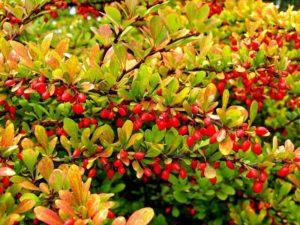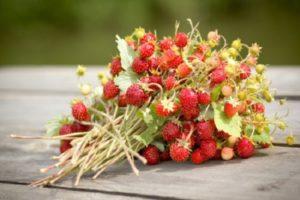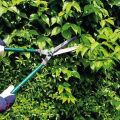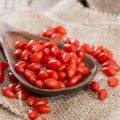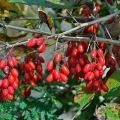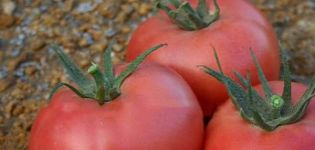When and how to properly propagate barberry by cuttings and layering at home
A novice gardener will find it useful to know how to breed barberry. A perennial shrub can be used to create a hedge. Ornamental shrubs can be used in group plantings. With their help, it is possible to decorate unsightly areas of the yard and garden.
Recommended timing for propagation of the bush
Barberry is propagated by green cuttings in summer. In autumn and spring, gardeners use other methods:
- seeds;
- dividing the bush;
- layering;
- woody cuttings and root shoots.
Methods and technology for breeding barberry
Ornamental shrubs are propagated vegetatively and by seeds. To breed a certain variety of barberry, you need to familiarize yourself with all the methods. Based on the characteristics of the species, decide whether it can be propagated by cuttings, sown with seeds or using cuttings.
Root shoots
Growth is given by adult shrubs. Root offspring appear on the periphery of the bush from the buds located on the roots. It is easiest to breed barberry in this way. It is necessary to inspect the root zone. Dig up the found shoots, cut off from the maternal root. To grow new bushes, you need to plant the offspring in a prepared place and water.
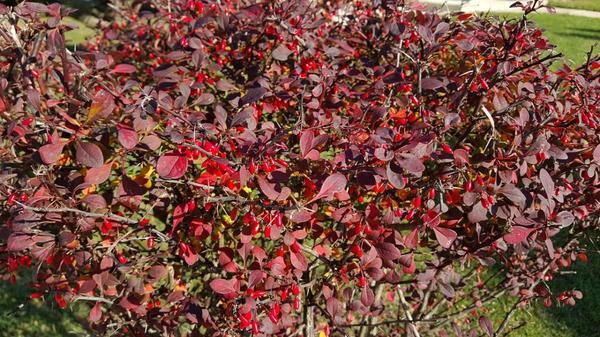
Layers
Not all types of barberry produce root growth. Some should be propagated by layering. For rooting, take the lower annual shoots. In the direction of growth, the branches dig a shallow furrow in the ground.
In the spring, the selected shoot is placed in it, fixed with staples, sprinkled with a mixture of humus, sand, garden soil.
By autumn, roots are formed on the layer. The next spring, the seedlings are separated from the mother bush. They are transplanted into a garden or school for growing. The first year they are covered from frost for the winter.
Woody cuttings
When propagated by woody cuttings, varietal seedlings are obtained. In terms of their characteristics, they fully correspond to the mother bush. Branches can be taken from shrubs no older than 10 years.
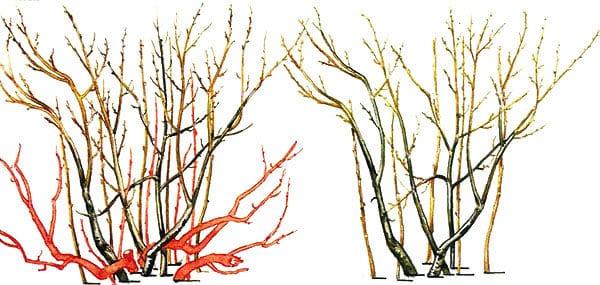
Annual, partially lignified shoots are suitable for cuttings. The middle part 15 cm long is cut out from the branch. 3-4 internodes should remain on it. The upper cut is made straight over the kidney. The lower one is oblique, at an angle of 30 ° under the kidney. The planting material is placed in a solution of a root formation stimulator. Cuttings are planted at an angle, deepened by 0.5 cm.
The soil in the nursery is prepared in advance:
- the first layer (15 cm) is poured with a mixture of humus, leafy earth, compost;
- the second layer is sand (4 cm).
Planted according to the scheme 5 x 10 cm.The nursery is fenced with boards 20 cm high. The cuttings are watered. The greenhouse is covered with a frame with glass or foil. It must be kept at a temperature of at least 20 ° C. Care comes down to daily watering (morning-evening), airing.
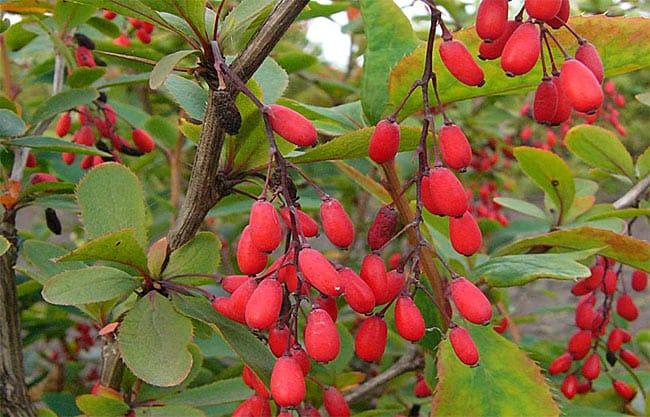
Green cuttings
Boxes are used for planting. They are filled with peat mixed in equal proportions with sand. Cuttings are cut from the middle part of this year's shoot, their parameters:
- length 10 cm;
- internodes 2;
- lower slant cut, located under the lower leaf;
- the upper cut is straight, located 2 cm above the upper leaf.
No more than 2 leaves are left on the cuttings, they are shortened by half. They are planted at an angle. The box is covered with foil. New leaves speak about rooting. In the fall, seedlings can be transplanted for growing in a greenhouse.
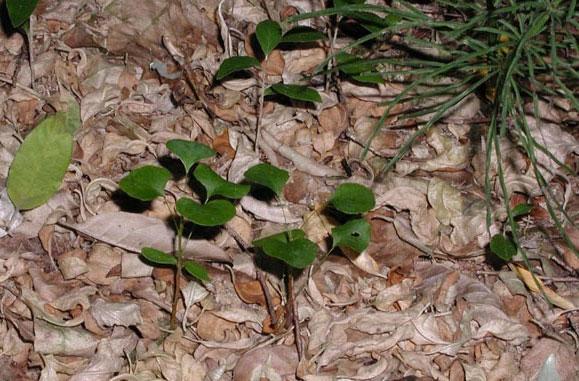
Dividing the bush
This method is not popular with gardeners. They resort to it in cases where the bush needs to be transplanted to another place. In the bush, all shoots are cut off. Leave hemp no more than 30 cm high. The bush is buried in, removed from the ground. The rhizome is divided into parts with shears. Each section should have 2-3 shoots and a sufficient number of roots. They can be planted in a place prepared in advance and watered.
Seeds
At home, varietal barberry is easiest to propagate by seed. Seedlings are obtained in this way only in the third year. They may lose their varietal characteristics.
Preparing and planting seeds
In temperate climates, seeds are easier to sow in the fall (October 1-15). During the winter they will undergo stratification. It is necessary. In spring sowing, it is organized artificially. The seeds are kept in the refrigerator for at least 3 months.
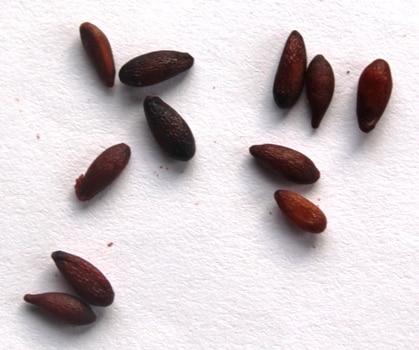
The germination capacity of barberry seeds is maintained for 2 years. Fruits for their receipt are recommended to be collected from bushes growing in well-lit areas. Stages of preparation of planting material:
- seeds are cleaned of pulp;
- washed well with water;
- dried.
Germinating seed at home
Growing barberry from seeds begins with the preparation of the ridge. Make them tall (20 cm). The rate of soil warming, its aeration depends on the height. The soil is filled with humus, mineral fats are added to it, watered, grooves up to 3 cm deep are marked out.They maintain an interval of 15 or 20 cm between them.
Seeds are laid out every 5 cm. Sand and compost are mixed to fill the furrows. They are pre-moistened. The seeds are covered with a layer of 3 cm. The surface of the soil is sprayed from a spray bottle. When sowing in winter, the ridge is covered with a layer of mulch.
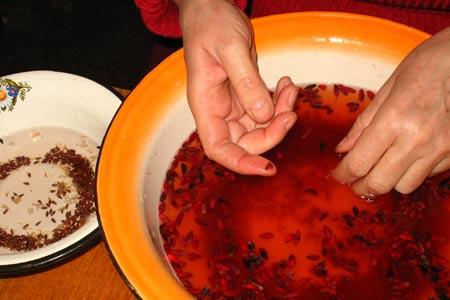
If the seeds are sown at home, then first they are stratified for at least 2 months. The container is filled with a mixture of peat, sand, humus, garden soil. The seeds are sown according to the 5 x 15 cm scheme. They are covered with wet sand. The box is covered with foil, and dipped into the cellar for 2-3 months. The seeds need a temperature between 0 and 5 ° C.
In January, they take it out, put it on the south window. The soil is watered from a spray bottle, the mini-greenhouse is ventilated, the film is removed after the sprouts appear. After the appearance of the second true leaf, the seedlings dive into another box in a 10 x 20 cm pattern or are planted outside.
Outdoor transplant
In the garden for growing seedlings, a place is allocated, the soil is fertilized with organic matter and mineral fertilizers. Seedlings are planted in a 10 x 20 cm pattern. The soil is watered. At night, they are covered from low temperatures with lutrasil. During the day, the first 2 weeks are covered from the sun.
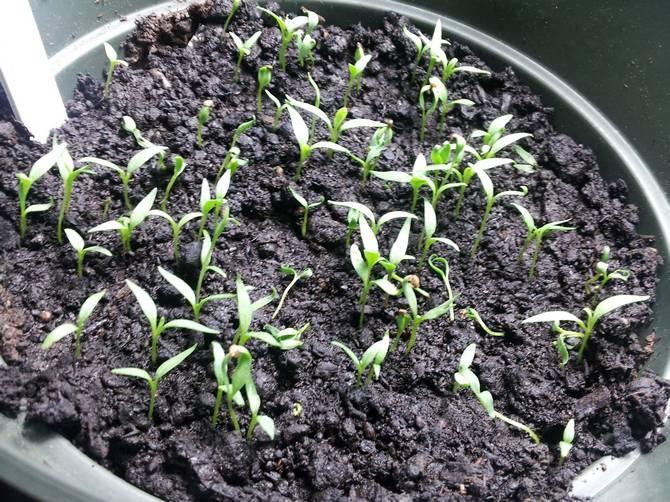
For the winter, barberry is covered with spruce branches, lutrasil. You can start transplanting to a new place only after 2 years. With seed reproduction, about 40% of the seeds emerge.
The main mistakes when breeding barberry
It is not always possible to grow a barberry seedling. This is due to the mistakes that gardeners make:
- when breeding barberry by dividing the bush, they do not shorten the aerial part, severely injure the roots;
- sow few seeds, do not provide proper care;
- digging up the root shoots, they leave few roots.
Barberry has many types and varieties. Each of them has its own developmental characteristics. The breeding method is chosen individually for each shrub.
